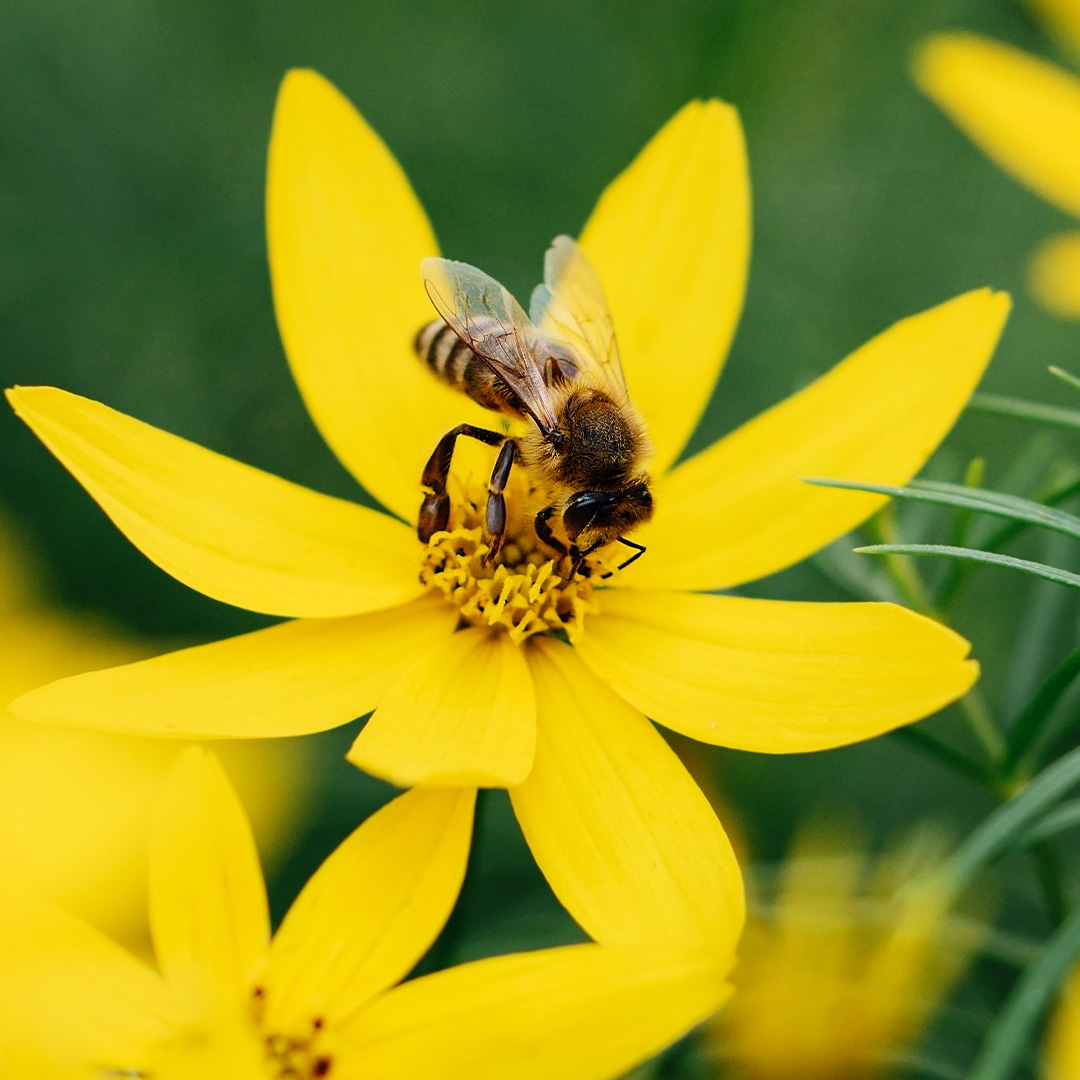Every thriving garden depends on pollinators, and bees are among the most essential. Without their diligent efforts, flowers would fade, and the abundance of fruits and vegetables we enjoy would significantly decline. In fact, approximately 30 percent of the food we eat—including onions, cashews, coffee, carrots, chocolate, and vanilla—relies on bee pollination. Clearly, protecting our pollinators isn’t just a gardening concern; it’s critical for our diets, ecosystems, and overall quality of life.
A Closer Look at Bees
While many species contribute to pollination—including carpenter, mining, sweat, and cellophane bees—the honeybee and bumblebee are the most recognizable and widely known. These social bees live in colonies and nest in cavities. Because they remain active throughout the summer, they need a continuous supply of floral nectar near their hives. As a result, they flourish in flower gardens, orchards, and any landscape rich in blooms.
However, bee populations are declining at an alarming rate. Two major threats stand out: habitat loss and pesticide drift.
Habitat Loss
As development expands, natural habitats disappear. This results in fewer nesting sites and limited food sources for bees. Obvious examples include meadows transformed into resorts or parks cleared for strip malls. However, subtle changes also contribute to the problem. For instance, many cultivated flowers lack sufficient nectar, making them ineffective as food sources for pollinators.
Pesticide Drift
In addition, the heavy use of pesticides to maintain lawns, parks, and crops poses serious risks. Some pesticides directly kill bees, while others contaminate nectar. Over time, these toxins build up in bees’ systems, leading to fatal outcomes. Even if spraying doesn’t occur nearby, wind can carry pesticides into critical bee habitats, causing unintended harm.
How to Invite Bees to Your Garden
Fortunately, you can make a difference by creating a pollinator-friendly space right in your own backyard. Consider these steps for protecting our pollinators and supporting local bee populations:
- Plant a diverse array of flowers that bloom throughout the summer, ensuring bees have a constant food source.
- Choose native plants whenever possible. Local bee species are more likely to recognize and utilize native blooms than unfamiliar introduced varieties.
- Avoid chemical use in your yard, especially when plants are flowering. This includes herbicides, pesticides, and fertilizers applied to lawns, gardens, and trees.
- Provide safe shelter for nesting and egg-laying. A simple woodpile or a specially designed bee house offers an ideal habitat.
- Ensure access to clean water. A bird bath or shallow basin with pebbles gives bees a place to hydrate safely.
By making even a few of these changes, you’ll create a haven for pollinators and help strengthen their populations.
Native Plants That Attract Bees
Want to get started? Begin with this list of native plants that bees adore:
- Apple (Malus)
- Aster (Aster)
- Blackberry & Raspberry (Rubus)
- Black-Eyed Susan (Rudbeckia)
- Blueberries (Vaccinium)
- Currant (Ribes)
- Elder (Sambucus)
- Goldenrod (Solidago)
- Highbush Cranberry (Viburnum)
- Joe-Pye Weed (Eupatorium)
- Lupine (Lupinus)
- Penstemon (Penstemon)
- Purple Coneflower (Echinacea)
- Redbud (Cercis)
- Rhododendron (Rhododendron)
- Sage (Salvia)
- Stonecrop (Sedum)
- Sunflower (Helianthus)
- Willow (Salix)
Annuals That Bees Love
In addition to perennials, consider these bee-attracting annuals:
- Alyssum
- Salvia
- Sage
- Sunflowers
- Zinnias
- Mint
- Lavender
Supporting Pollinators with Every Plant
Protecting our pollinators doesn’t require major changes—just mindful, bee-friendly choices. At Diegel’s Greenhouse, we offer a wide selection of plants that support pollinators, as well as expert advice to help you transform your garden into a buzzing, blooming sanctuary.
Whether you’re starting fresh or enhancing an existing space, we’re here to help you make a meaningful impact.



